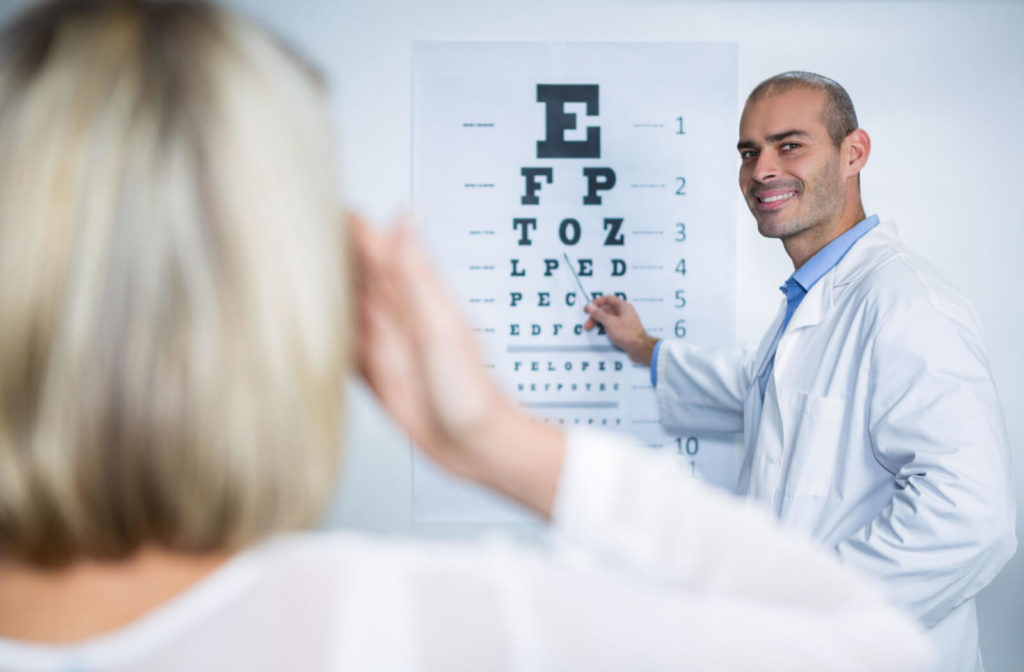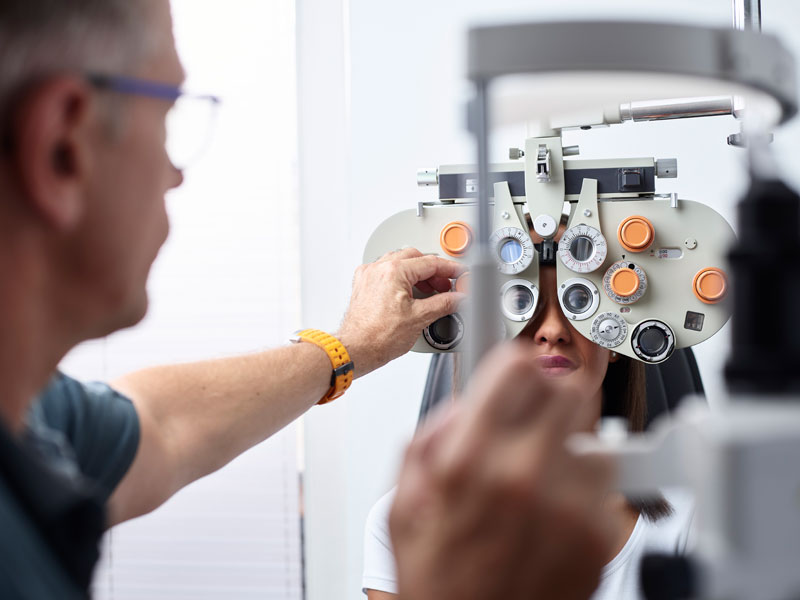Checking Out the most up to date Technical Developments in Optometry and What They Mean for Eye Doctors
In the ever-evolving field of optometry, recent technical improvements are improving just how specialists come close to eye treatment. From the precision of Optical Coherence Tomography to the nuanced insights supplied by AI-driven diagnostic tools, these developments are setting brand-new standards in individual analysis and therapy. Teleoptometry is poised to redefine availability, ensuring that proficiency goes beyond geographical constraints. As these developments penetrate the practice, optometrists are confronted with the challenge of welcoming these tools to improve individual results. Yet, the question stays: just how will these technological changes redefine the functions and duties within the occupation?
Developments in Diagnostic Tools
Advancing the area of optometry, advancements in diagnostic devices have actually revolutionized the means eye care professionals examine and detect eye conditions and visual disabilities. The previous years has actually seen considerable technological improvements, enabling even more detailed and exact evaluations. Optical Comprehensibility Tomography (OCT), for example, offers high-resolution cross-sectional pictures of the retina, allowing for the very early discovery of illness such as glaucoma and age-related macular degeneration. This non-invasive imaging technique has actually ended up being crucial in modern optometric technique.
Another secret development is the intro of advanced corneal topography systems, which map the surface area curvature of the cornea with precision. These tools are especially beneficial for fitting call lenses and identifying corneal problems. In addition, electronic retinal imaging has actually transformed conventional ophthalmoscopy, using in-depth, panoramic views of the retina that assist in detailed visual exams.
The advancement of wavefront aberrometry has actually additionally been critical, enabling the analysis of refractive errors with unrivaled accuracy (Eye Doctor Optometrist). This modern technology assists in tailoring restorative lenses and boosting medical end results for refractive surgeries. Jointly, these diagnostic developments equip optometrists to deliver exceptional person care, ensuring very early treatment and tailored treatment approaches, eventually improving aesthetic wellness outcomes
AI in Person Administration
Building on the foundation of cutting-edge diagnostic tools, the unification of expert system (AI) in patient monitoring represents a transformative leap for optometry. AI systems are significantly employed to enhance efficiency, precision, and customization in client treatment. By assessing large amounts of data, AI can recognize patterns and anticipate prospective eye problems, enabling optometrists to customize treatments better. This capability is vital in taking care of chronic eye conditions such as glaucoma and diabetic person retinopathy, where very early discovery and continual surveillance are vital.
Furthermore, AI-driven systems assist in structured person communications and administrative processes. Automated scheduling, online assessments, and individualized follow-up plans not just improve person complete satisfaction but additionally maximize time management for specialists. These systems can triage clients based upon the necessity of their problems, making certain that those in critical requirement obtain prompt interest.
Moreover, AI boosts decision-making by providing eye doctors with evidence-based suggestions and therapy paths. By incorporating information from electronic health and wellness documents, AI tools supply insights that educate scientific decisions, decreasing the risk of errors and enhancing client outcomes. As AI remains to progress, its role in person management will likely increase, reshaping the landscape of optometric care.
Breakthroughs in Retinal Imaging
In the realm of optometry, retinal imaging has actually witnessed amazing technical advancements that are boosting diagnostic capacities and individual treatment. Innovations such as Optical Comprehensibility Tomography (OCT) and fundus photography have revolutionized exactly how optometrists picture and analyze the retina.
Improved imaging techniques like OCT angiography are additional refining diagnostic precision. Optometrist Chino. Such developments assist in the identification of min retinal adjustments that might indicate disease development.
Additionally, innovations in expert view website system are augmenting retinal imaging by allowing automatic analysis of huge datasets. These systems assist eye doctors in recognizing patterns a sign of pathology, therefore boosting analysis accuracy and effectiveness. Collectively, these developments are transforming retinal imaging right into a foundation of modern eye treatment, boosting results and broadening therapeutic possibilities.
Teleoptometry's Growing Function
Teleoptometry is progressively coming to be a crucial part of eye care, driven by developments in digital interaction and diagnostic devices. As optometry embraces electronic makeover, teleoptometry helps with remote appointments, allowing optometrists to expand their solutions past standard borders. This is specifically advantageous in underserved and country locations where access to specialized eye care is frequently limited. By leveraging high-resolution video conferencing and progressed retinal imaging, eye doctors can carry out extensive eye exams from afar, making certain timely medical diagnosis and treatment.
The combination of expert system (AI) additional boosts teleoptometry, making it possible for the analysis of visual information and assisting in the discovery of ocular conditions such as description glaucoma and diabetic retinopathy. AI-powered formulas can swiftly translate intricate imaging data, supplying optometrists with valuable understandings that reinforce professional decision-making.
Furthermore, teleoptometry supports continuity of treatment through smooth integration with electronic health documents (EHRs), enabling eye doctors to preserve detailed individual backgrounds. This makes sure that clients get personalized and constant care even when speaking with different professionals.
Regardless of these benefits, obstacles continue to be, including review ensuring information safety and security and managing patient assumptions. However, teleoptometry stands for a significant stride in the direction of even more obtainable, effective, and patient-centered eye care. As innovation develops, its duty is positioned to increase further.

Future Patterns in Eye Treatment
A myriad of ingenious patterns is set to improve the future of eye treatment, driven by technical advancements and the progressing needs of clients. One considerable trend is the integration of artificial intelligence (AI) in diagnostics, which promises to improve the precision and effectiveness of eye examinations. AI algorithms can assess substantial amounts of data from retinal photos, potentially detecting conditions like diabetic retinopathy and glaucoma earlier than standard approaches.
Additionally, individualized medicine is getting traction in optometry, with genetic testing educating customized therapy plans. This method intends to enhance client results by customizing interventions to individual genetic profiles. Wearable modern technology, such as wise contact lenses, is likewise coming up, providing real-time surveillance of intraocular stress or glucose levels, hence supplying constant understandings right into ocular and systemic health.
The fostering of enhanced truth (AR) and online truth (VIRTUAL REALITY) in training and patient education is one more emerging trend. These modern technologies offer immersive experiences that can boost understanding and abilities both for eye doctors and individuals. As these patterns advance, eye doctors need to stay abreast of technological developments to give sophisticated care, making certain improved individual outcomes and contentment in the vibrant landscape of eye treatment.
Verdict

Collectively, these analysis developments empower optometrists to deliver premium patient treatment, making certain early treatment and tailored therapy methods, inevitably improving visual health results.

As these modern technologies continue to progress, optometrists have to adjust and integrate them right into practice, ultimately enhancing workflow performance and raising the standard of eye care provided to individuals.